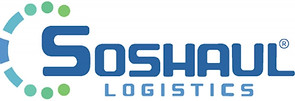Understanding the Return-to-Duty Process for Truck Drivers After a Drug or Alcohol Violation
- Soshaul

- Apr 15
- 3 min read
Safety and compliance are the foundations of a successful career for truck drivers. But what happens when a driver violates the Department of Transportation’s (DOT) drug and alcohol testing regulations? The consequences are serious—and rightly so—but there is a structured path for drivers who are committed to getting back on the road. It’s called the Return-to-Duty (RTD) process, and it’s not just a formality—it's a federally mandated procedure under 49 CFR Part 40 that ensures drivers are truly ready to return to safety-sensitive duties.

Here’s what you need to know about the return-to-duty process for CDL drivers.
What Triggers the Return-to-Duty Process?
A driver enters the return-to-duty process if they:
Test positive for drugs or alcohol during a DOT-required test
Refuse to take a DOT drug or alcohol test
Violate DOT alcohol use policies (e.g., being under the influence while on duty)
Engage in other prohibited conduct under DOT regulations
Once a violation is recorded, the driver is immediately removed from safety-sensitive functions, including operating a commercial motor vehicle (CMV).
The Role of the Substance Abuse Professional (SAP)
After a violation, the driver must be evaluated by a Substance Abuse Professional (SAP). The SAP is a DOT-qualified professional who determines what education and/or treatment the driver must complete.
This step is critical. The SAP is responsible for creating a personalized treatment plan, which could include counseling, education courses, outpatient therapy, or inpatient treatment, depending on the circumstances.
See Subpart O for further information.
Completing the SAP’s Recommendations
The driver must follow the SAP’s guidance to the letter. There’s no shortcut here—completion is mandatory. Once the driver finishes the required program, the SAP conducts a follow-up evaluation to assess whether the driver has successfully complied with the recommendations.
If the SAP is satisfied, they will issue a report stating the driver is eligible to take a return-to-duty drug and/or alcohol test.
The Return-to-Duty Test
The return-to-duty test must be directly observed and must result in a negative result for the driver to resume safety-sensitive duties.
Important note: Even after passing the return-to-duty test, the journey isn’t over. The driver is now subject to unannounced follow-up testing.
Follow-Up Testing Plan
The SAP will create a follow-up testing schedule that lasts for at least 12 months and can continue for up to 5 years. The number of tests is determined by the SAP but must include a minimum of six unannounced tests in the first 12 months following the return to duty.
Employers are responsible for ensuring these tests are conducted, and drivers must comply to remain eligible for work.
Recordkeeping and the Clearinghouse
Since January 2020, all DOT drug and alcohol violations have been recorded in the FMCSA Drug & Alcohol Clearinghouse. Employers are required to check this database before hiring a CDL driver and at least once a year for existing drivers.
If a driver has a violation in the Clearinghouse, they cannot be hired to perform safety-sensitive functions until they have completed the entire return-to-duty process.
Can a Driver Still Have a Career After a Violation?
Yes—but it depends on their commitment to recovery, compliance, and professionalism. Many drivers who complete the SAP process, demonstrate responsibility, and maintain clean records go on to have long, successful careers.
However, some employers have zero-tolerance policies, so job opportunities may become more limited. Transparency and a strong work ethic will be critical when returning to the field.
The return-to-duty process isn’t just about compliance—it’s about ensuring public safety and supporting drivers who are willing to take responsibility and move forward. If you're a driver facing this situation, know that the road back is challenging but possible.
Take the process seriously, lean on your support system, and use this as an opportunity for personal and professional growth. Safety always comes first—and with the right steps, you can get back behind the wheel and back to building your future.
Start your trucking business off the right way! Learn more about our new book, How to Start, Drive, and Accelerate a Trucking Business.

Interested in being notified when more free resources or courses are available? Subscribe down below and you'll be the first to know!
Soshaul Logistics LLC and its affiliates do not provide tax, legal or accounting advice. This material has been prepared for informational purposes only, and is not intended to provide, and should not be relied on for, tax, legal or accounting advice. It is meant to serve as a guide and information only and Soshaul Logistics, LLC does not assume responsibility for any omissions, errors, or ambiguity contained herein. Contents may not be relied upon as a substitute for the FMCSA's published regulations. You should consult your own tax, legal and accounting advisors before engaging in any transaction or operation.




Comments